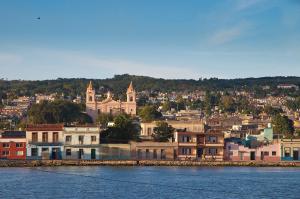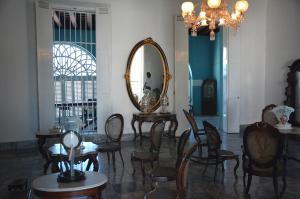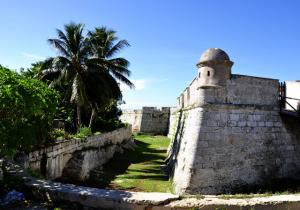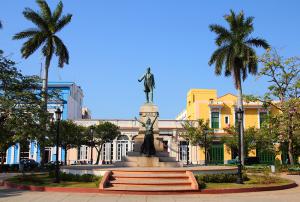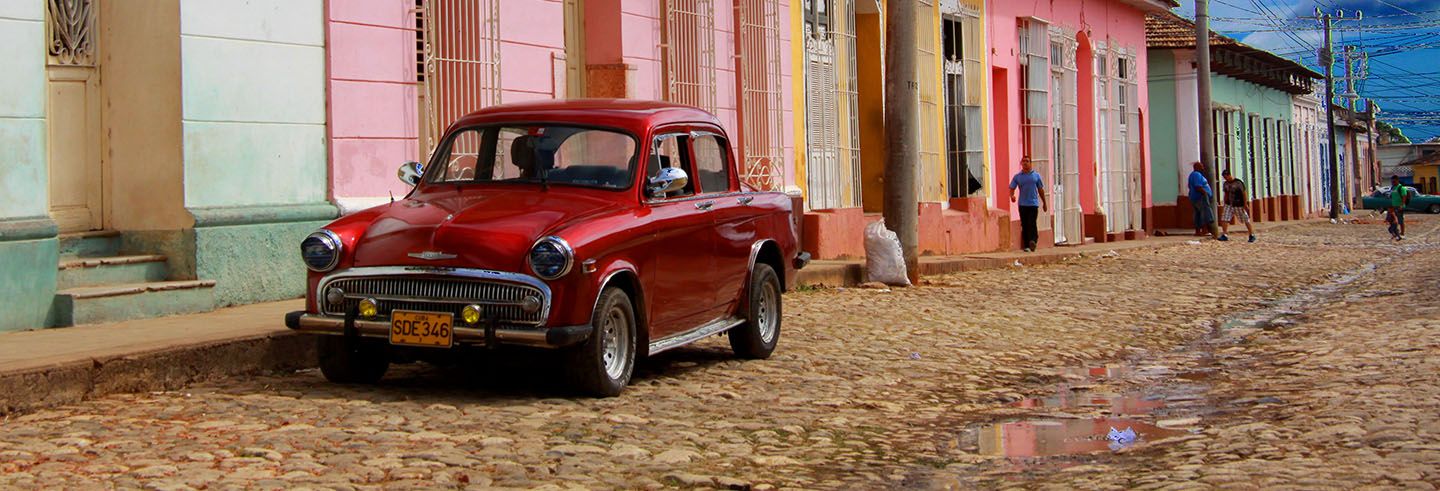

Matanzas, Cuba
Visit Matanzas and discover the secrets of the capital of the province known as the Athens of Cuba
Matanzas is the capital of the province of the same name. It is located in the extreme west of the island of Cuba, on the border of Havana. This city, although it is not one of the best known in the country, it's the eleventh most populated city. Its geography, history and architecture make it no less interesting than the others.
Its streets and squares are painted between buildings of significant architectural and historical value where the typical neoclassic style from the 19th century dominates the scene. As the buildings of the century, we have to mention the Palacio de Junco (Junco Palace) which is currently used as the Museo Histórico Provincial (Provincial Museum of History) or the Teatro Sauto (Sauto Theatre) where important national and international figures greatly entertained the people of Matanzas.
The architectural scenery of Havana is globally well known thanks to its beauty and originality. The Matanzas City infrastructures were inspired by the capital city and thanks to this both cities are very remarkable.
The city is formed between two rivers, the Yumurí to the north and the San Juan to the south, which flow into the Bay of Matanzas. The existence of these canals made it necessary to build 29 spectacular passages that name the city the City of Bridges. They are undoubtedly worth visiting because of their designs and each one of them is unique and cannot be duplicated. They belong to different times due to the meteorological conditions that caused their collapse. They are one of the main pieces of material evidence that testifies to the prosperity of the city. Crossing them we can access northern Barrio de Versalles (Versailles Neighborhood), built by the French in the 19th century. Due to the great economic development of the time, it is the cradle of rumba, and where we can find iconic sites such as Castillo de San Severino (San Severino's Castle) or Ermita de Monserrate (Monserrate's Shrine).
Heading south, outside Matanzas' urban centre is a beautiful and unique natural landscape where you can quietly enjoy nature or test your exploratory skills. Among the most recommended spots are the Cuevas de Bellamar (Bellamar Caves), galleries with beautiful limestone rock formations that have the distinction of being the oldest active tourist attraction in all of Cuba; the breathtaking Playa Coral (Beach) with 12 km of coral reefs; or the surroundings of the río Canímar (river), where you can marvel at the native flora and fauna while the waters sway your boat.
Besides the landscapes of the area, Matanzas is an interesting destination due to its particular history. The city was founded on October 12, 1693, by order of the Spanish King Carlos II with the aim of eradicating smuggling pirates, corsairs and inhabitants of these lands. Since the 16th century the area had been a territory where people worked mainly on livestock and to a lesser extent on wood, sugar cane and tobacco, which made it the target of men like the corsair Peter Heyn, who in 1628 plundered the coveted booty of the Silver Fleet that brought gold from America to Spain.
Two centuries after its foundation, Matanzas experienced socioeconomic splendour thanks to the area's prosperous industries. It was in this century that the great colonial buildings were built in the neoclassical style typical of the 19th century. They adorned the city and made it the main cultural centre of the country, receiving the name of the Athens of Cuba, which it still maintains today. However, it is worth noting here that from the 20th century onwards, Matanzas experienced a boom that positioned it as the most important power in all of Cuba, even ahead of Havana, all as a result of the declaration of its port as a free zone.
Matanzas is also the scene of several milestones of Cuban culture such as the birth of danzón, the national dance, or the birth of national poets such as Bonifacio Byrne and Agustín Acosta.
In its streets, you can find museums like the Museo Farmacéutico (Pharmaceutical Museum), unique in America, or the Museo de la Ruta de los Esclavos (Slave Route Museum), first of its kind, which makes Matanzas a great place to soak up the culture and the true Cuban spirit.
In Matanzas, as the birthplace of the rumba, whenever you go there, the music will be waiting for you in the streets and avenues of the city. If you visit it from October 10, for ten days you can be part of the Festival del Bailador Rumbero at the Teatro Sauto and learn how to move your hips to the Cuban sound.
Interactive map:
Varadero
What to see:
- Parque Josone
- Mansión Xanadú
- Delfinario de Varadero
- Reserva Ecológica Varahicacos
- Cueva de Ambrosio
- Cueva de los Musulmanes
- Iglesia de Santa Elvira
- Parque Central y Parque de las 8 000 taquillas
- Cayo Blanco
Beaches:
Museums :
Matanzas
What to see:
- Teatro Sauto
- Plaza de la Vigía
- Catedral de Matanzas
- Barrio de Versalles
- Castillo de San Severino
- Puente Calixto García
- Puente de la Concordia
- Estadio Palmar de Junco
- Parque de la Libertad
- Parque de Bomberos
- Iglesia de San Pedro Apóstol
- Ermita de Monserrate
- Cuevas de Bellamar
- Cuevas de Saturno
- Río Canímar
- Bahía de Cochinos
- San Miguel de los Baños
Beaches:
Museums:
Península de Zapata
What to See:
- Boca de Guamá
- Laguna del Tesoro
- Criadero de Cocodrilos de Guamá
- Gran Parque Natural Montemar
- Cueva de los peces
- Bahía de Cochinos
Beaches:
Museums :
Other nearby destinations:
Why "Cuban Travel Agency"?
"Cuban Travel Agency" is part of the Visitar Cuba project, an organization of Cuban agencies whose objectives are:
- ✓ Disseminate Cuba, its culture and its heritage.
- ✓ Promote sustainable tourism.
- ✓ Support the local economy, prioritizing direct contact with Cuban agencies.
- ✓ Offer budgets without commitment and without cost, from the hand of Cuban experts.
Travel agencies and Tour Operators
If you are an agency or tour operator and you are looking for help to create trips to Cuba, trust our expert hands, we offer special prices.
© www.CubanTravelAgency.Org - All rights reserved.



